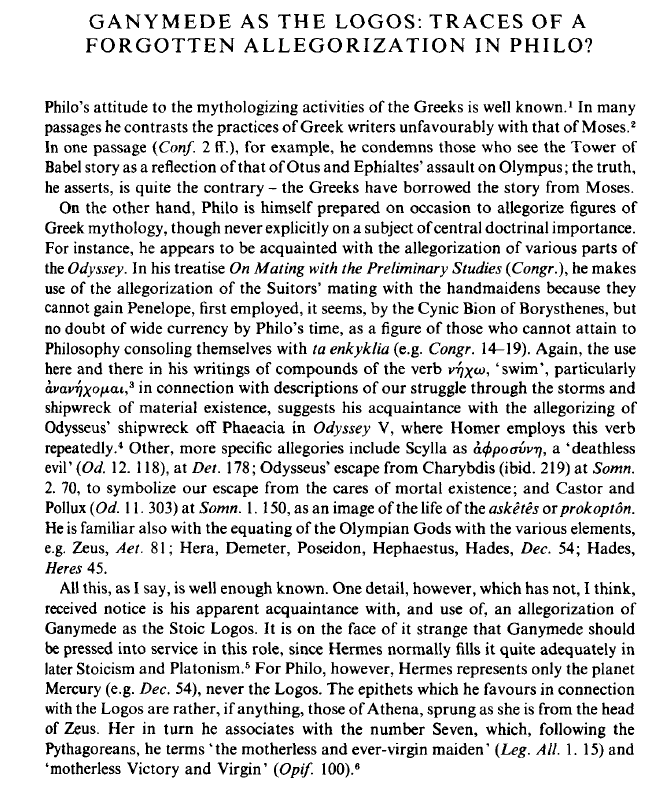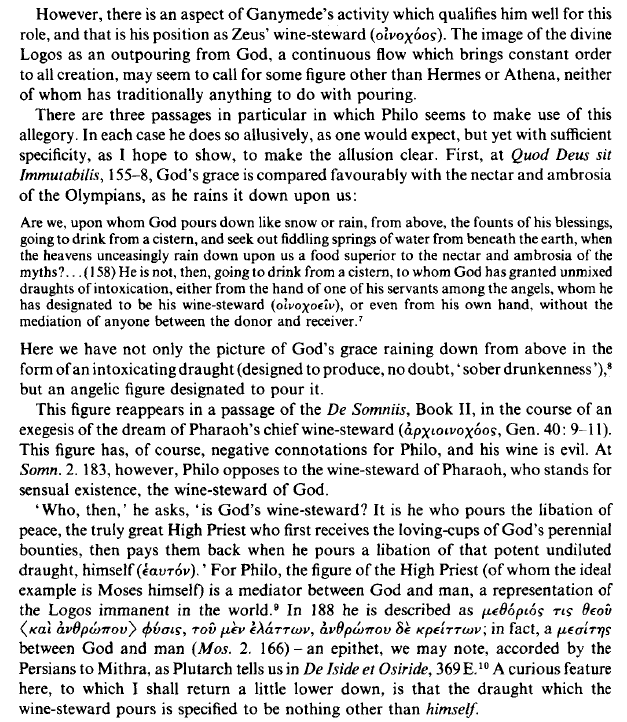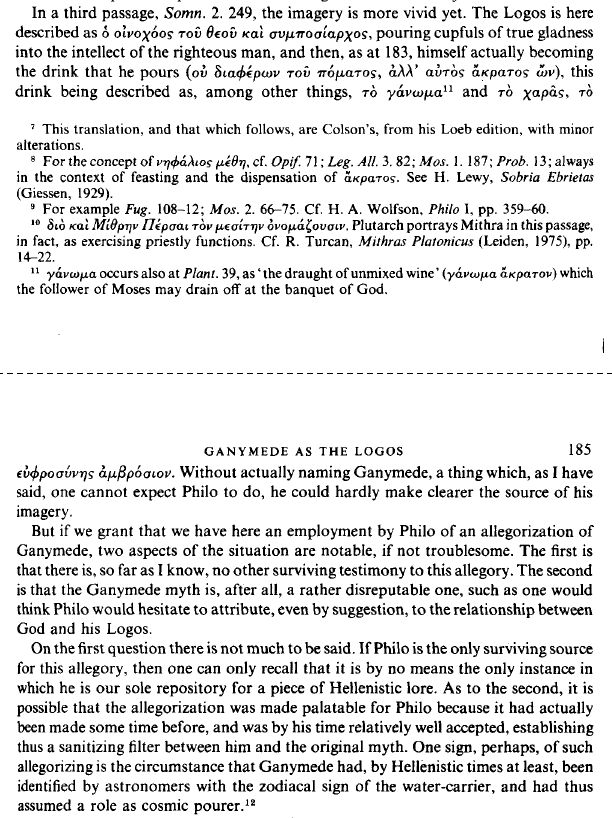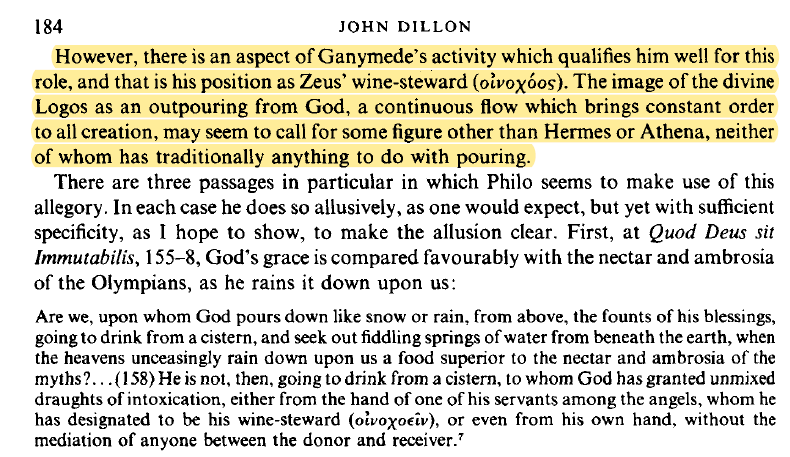Indeed. I am irritated though not surprised by the no. of likes the tweet quoted by @/PaganTrad has received. One needs to only spend a bit of time looking at Neoplatonist thinkers like Proclus to grasp the depth of other polytheist/polycentric religious systems.
Of course, as pointed out nicely above, the argument that non-Hindu gods are "made up" is the exact argument the Abrahamics have used at our own religion, & frankly, it is not even worthy of being called an argument. It is a plain assertion with no substance.
The reason some Hindus display hate & ignorance towards other polytheist/polycentric religious systems is because they think this shows the extent of their Hindu pride & zeal. Well, that& #39;s all this bunch has to show: Pride & zeal without any knowledge to back it up.
Now, see this other & #39;argument& #39;. The implied reference seems, most probably, to be about the story of Ganymede, a beautiful youth lifted up to heaven by Zeus in the form of an eagle so that he may assume the office of the Gods& #39; cup-bearer to pour nectar & ambrosia for them.
The annoying thing is that some Hindus just don& #39;t get that this feature of supposedly "embarrassing" stories are common to many polytheist systems, including our dharma. There are many such stories found in the पुराण-s. How did the Greeks understand theirs & we ours?
For many of the Greek myths, they received a special treatment at the hands of the Neo-Platonist sages such as Proclus, who very skillfully extracted the higher meanings of such seemingly "embarrassing" or profane tales.
Although we are unable to find Neo-Platonist sources dealing with the inner meaning of the Ganymede story (Due to sources getting lost over time), we do have a scholarly attempt to reconstruct the allegorical meaning of the story, preserved subtly in later, Christian sources.
Those not averse to reading can check out this analysis by John Dillon, "Ganymede as the Logos: Traces of a Forgotten Allegorization in Philo?":
To summarize for the lazy, the allegorical understanding of the Ganymede story that the Christian Philo seems to have relied upon in his own writings is that Ganymede represents the god Zeus& #39;s power to pour his blessings/wisdom. The pouring imagery is purposeful because:
Ganymede& #39;s beauty that befitted only existence among the immortal Gods & not in the mortal realm is symbolic of Ganymede& #39;s perfection.++
The interpretation of Ganymede pouring the nectar of Zeus& #39;s wisdom/Logos is not far-fetched when one sees this verse of the Homeric Hymns:
Original: "ἦ τοι μὲν ξανθὸν Γανυμήδεα μητιέτα Ζεὺς"
The epithet, & #39;μητιέτα& #39; for Zeus in the original means a "giver of good counsel"
Original: "ἦ τοι μὲν ξανθὸν Γανυμήδεα μητιέτα Ζεὺς"
The epithet, & #39;μητιέτα& #39; for Zeus in the original means a "giver of good counsel"
So, there is this much depth in a so-called "boy-abduction" story. One well-read may also note similarities with the vaidika story of इन्द्रदेव taking the form of a मेष (ram) to forcefully take the sage मेधातिथि to heaven, against his wishes.
The forced ascent to heaven is symbolic of the manifestation of grace (albeit in a very dynamic & violent manner) of the deity; an idea meant to be understood by a matured & intelligent mind.++
Interestingly, the ऋग्वेद (शाकल्य-संहिता 8.2) refers to the sage being one of an awakened intellect. Additionally, the story also occurs in the context of a सोमयाग with references to the extraction of the सोम juice. I will leave to better minds to figure out in depth.++
Now, to come to an example of an "embarrassing" story of our own, there is the story of the दारुकवन, where शिव is shown as seducing the wives of some मुनि-s in the दारु forest. If we leave this story in the hands of the not-so-gifted bunch, what will they do?++
However, such stories become profoundly meaningful at the hands of a skilled sage. So, in a शिव-स्तुति occurring in the किरणागम, गरुड says 16 "जय-s" to शिव & 1 of the 16 is a praise of शिव as one who seduced the wives of sages in a दारु forest. What does this mean?
A brilliant commentator by the name of त्र्यम्बकशम्भु explains the meaning as follows. The दारु forest represents the collective of various philosophies such as सांख्या, etc. The beauty of the forest/grove represents the sages& #39; fixation in these philosophies.++
The wives of the sages are their intellects (बुद्धि-s). The seduction of the wives is the seduction of the sages& #39; intellects by शिव. Now, there are further inner meanings the commentary does not delve into, but I will stop here.
This is one of those stories often used by the ignorant to scandalize our Gods & texts but such stories were understood by sages within the traditions as having a deeper meaning & so were the Greek (or other polytheist traditions for that matter) Gods & myths by their sages.
Now, as for the existence of gods of other peoples, I will leave with the observation that सायण, the master commentator of practically the entire वेद, comments upon a मन्त्र of the तैत्तिरीय-संहिता that there are देव-s born among the म्लेच्छ-s too (म्लेच्छानां-जातयाः)!! //End
Just to give a context for this thread, https://twitter.com/ghorangirasa/status/1210630891610853376?s=21">https://twitter.com/ghorangir...
This tweet: https://twitter.com/PaganTrad/status/1210552571435175936">https://twitter.com/PaganTrad...

 Read on Twitter
Read on Twitter








